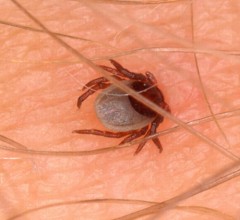
Lyme Disease is caused by the bacterium Borrelia burgdorferi (B. Burgdorferi). Certain ticks carry these bacteria. The ticks pick up the bacteria when they bite mice or deer that are infected with Lyme Disease. You can get the disease if you are bitten by an infected tick. If a person gets Lyme Disease they will have similar symptoms to the flu such as a fever, headache, chills, lethargy and muscle pain. There may be a "bulls eye" rash, a flat or slightly raised red spot at the site of the tick bite. Often there is a clear area in the centre. It can be larger than one to three inches wide.
As the disease progresses the symptoms get worse; as the patient's rash worsens and becomes itchier, there may be joint inflammation or a stiff neck and they may even begin acting strangely. Deer ticks can be so small that they are almost impossible to see. Many people with Lyme Disease never even saw a tick. Everyone who has been bitten by a tick should be watched closely for at least 30 days.
Most people who are bitten by a tick do NOT get Lyme Disease but a single dose of antibiotics may be offered to someone soon after being bitten by a tick as a precaution against Lyme Disease. If diagnosed in the early stages, Lyme Disease can be cured with antibiotics. Without treatment, complications involving the joints, heart, and nervous system can occur.
